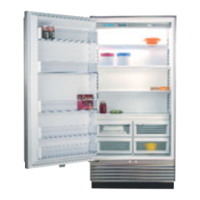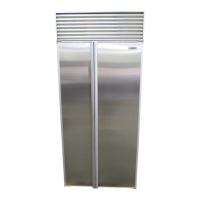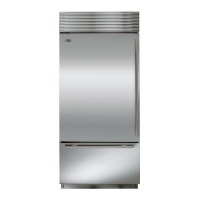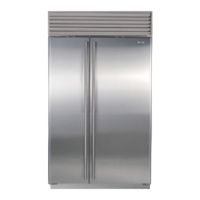Keeping Food
Safe to Eat
28
eeping
food at its best
K
eeping food at its best
Most food borne illness is
caused by bacteria such a
staphylococcus, salmonella,
e coli and botulism. These
bacteria grow rapidly at temper-
atures between 45°F (7˚C) and
140°F (60˚C), a range that’s
called the Danger Zone. Never
leave food in the danger zone for
more than two hours. When the
bacteria have multiplied to the
millions in warm temperatures,
they cause illness. Some bacteria
cause flu-like symptoms, while
others cause serious illness or
even death. Young children, the
elderly and people who are
already ill are more likely to
become sick from food
poisoning.
To reduce your risk of food
borne illness, use the following
techniques to keep your food
safe to eat:
When You’re Shopping
• Place packages of raw meat,
seafood or poultry in plastic
bags to keep them from
dripping on other foods.
• Shop for meat, seafood and
poultry last. Don’t leave these
foods in a hot car when you’ve
finished shopping. Take along
a cooler in hot weather or
when you have to travel long
distances.
• Check "use by" and "sell by"
dates on foods to make sure
they’re fresh. Use extra care
when buying deli food. Buy
only the amount you will use
in 1-2 days. Discard hot or
cold deli food that has been at
room temperatures for more
than two hours.
When You Store Food
• Monitor temperatures of
refrigeration zones on the
electronic control panel of
your Sub-Zero unit. Keep the
refrigerator temperature at
40°F (4˚C) or below, and
freezer temperature at 0°F
(-18˚C).
• Follow the recommended
refrigerator and freezer storage
times and temperatures in this
guide.
• Store raw meat, poultry and
seafood separate from other
foods. Keep juices from these
packages from dripping on
other food.
• Never taste food that looks or
smells strange to test its
freshness. Discard it.
• For refrigerator storage, leave
raw meat, poultry and seafood
in its original wrapper unless it
is torn. Repeated handling can
introduce bacteria to these
foods. For freezer storage, use
freezer wrap, freezer-quality
plastic bags or aluminum foil
over the commercial wrap if
foods will be stored in the
freezer for more than a couple
of months. This minimizes
dehydration and quality loss.

